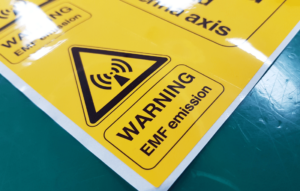Electric vehicles (EVs) are often seen as a symbol of progress – a step towards reducing carbon footprints and embracing a more sustainable future. But for one man in Georgia, his choice to drive an eco-friendly 2015 Nissan LEAF came with unexpectedly life-changing consequences. His story became the center of a lawsuit that has raised important questions about the health risks associated with EMF (electromagnetic field) exposure from electric vehicles, something that few people think about, but could have some serious impacts as EVs become more common.
This blog will take a look into his experience, some of the details of his lawsuit, and what it could mean for others who drive or are considering driving electric vehicles.
The Man Behind the Lawsuit
In 2021, a Georgia resident took legal action against Nissan, alleging that his 2015 Nissan LEAF had exposed him to dangerously high levels of EMF radiation. The plaintiff, who chose the LEAF for its environmental benefits, soon began to experience a range of severe physical and mental health symptoms, which he attributes to EMF exposure from the car’s battery located directly beneath the driver’s seat.
According to the lawsuit, EMF readings inside his vehicle were significantly higher than what is typically considered safe – levels reaching up to 31.3 milligauss (mG) in certain parts of the car, far exceeding the recommended safety threshold of 2 mG. Over time, he reported experiencing chest palpitations, memory loss, hallucinations, and other severe symptoms that he believes were caused by prolonged exposure to these elevated EMF levels. These symptoms grew so severe that they affected his daily life, leading to job loss and eventually the breakdown of his marriage.
Understanding EMF Exposure
Electromagnetic fields (EMFs) are invisible areas of energy produced by electrical devices, including the large batteries found in EVs like the Nissan LEAF. While low levels of EMFs are a normal part of our environment – emitted by everything from the Earth’s magnetic field to household appliances – prolonged exposure to elevated levels has been linked to various health concerns.
In the case of the plaintiff, the levels of EMF inside his vehicle allegedly far surpassed the safe exposure limits, with some areas measuring more than 15 times higher than the threshold often deemed acceptable. Unlike many other sources of EMF, such as cell phones or microwaves, the battery in an electric vehicle is much larger and is in constant proximity to the drivers’ vitals, making for a potentially large amount of exposure.
The Impact on This Guy’s Life
The health problems reported by the plaintiff in the Nissan LEAF lawsuit were pretty extreme. He initially experienced what seemed like relatively mild, though still concerning, symptoms – uncontrolled eye dilation and chest palpitations. However, these escalated to more serious conditions, including memory loss, severe concentration issues, and eventually full-on hallucinations that left him unable to determine what was real.
The severity of these symptoms reached a point where the plaintiff found himself unable to perform his job, resulting in termination. His condition continued to deteriorate further, leading to hospitalization after a sudden loss of the ability to hear and speak. His health problems persisted, regularly leaving him with chest palpitations, facial tingling, breathing difficulties, and a persistent feeling of pressure in his head.

These health challenges naturally took a significant toll on his personal life. Sadly, his marriage eventually fell apart, with his wife filing for divorce just a few months after his symptoms became unmanageable. The plaintiff is now seeking up to $10 million in damages and an additional $990 million to fund a non-profit organization aimed at raising awareness about EMF exposure from electric vehicles and other unshielded electronic devices.
What This Lawsuit Means for Electric Vehicle Drivers
The lawsuit is not just a reflection of one man’s personal battle but also raises big questions about the safety of electric vehicles and the responsibilities of automakers in general. As electric cars become increasingly common, hyped up by environmental concerns and government incentives, the issue of EMF exposure is likely to become more prevalent.
While there is currently no universal consensus on the dangers of EMF exposure from electric vehicles, this guy’s situation highlights the need for more research and better regulation to protect consumers. This lawsuit and others that may follow it could have significant implications for the industry, potentially prompting changes in how electric vehicles are manufactured and monitored for EMF safety.
Balancing Innovation and Safety as We Move Forward
The plaintiff’s experience is an example of the complex trade-offs we face as we transition to new technologies; this Georgia man probably felt pretty great about himself those first few days of being a newfound eco-warrior, all the while cruising up to having his entire life turned upside down. Electric vehicles undoubtedly offer some benefits, such as reducing greenhouse gas emissions and decreasing reliance on fossil fuels… well… sort of. However, this case serves as a reminder that with any technological advancement, there can be unintended consequences that need to be carefully managed.
What You Can Do
If you’re concerned about EMF exposure, there are practical steps you can take to protect yourself:
- Monitor EMF Levels: Consider using an EMF meter to keep track of the exposure in your vehicle and home.
- Minimize Exposure: Avoid sitting directly above or near the car battery for extended periods, if possible.

Save 25% on Aires Tech EMF protection with code “PRIME” - Use EMF Protection Devices: Invest in EMF protection products, such as those made by Aires Tech, which are designed to reduce harmful EMF exposure from electronic devices, including those in electric vehicles.
- Stay Informed: Keep up with the latest research on EMF safety and be aware of any new findings or guidelines.
Closing Thoughts On a Cautionary Tale
The Nissan LEAF lawsuit has emerged as a cautionary tale on an emerging issue that is likely to become increasingly relevant as more people switch to electric vehicles. It’s a reminder that while these cars offer numerous environmental benefits, there may also be hidden risks that we don’t yet fully understand, as with any new technology. As these stories and even blogs like this one continue to gain traction, they could shape how automakers address EMF exposure and consumer safety in the future.
For now, this man’s struggle with his EV serves as a grim reminder that emerging technologies can bring about unforeseen challenges that require careful consideration and vigilance. The pursuit of a more sustainable future must go hand in hand with a commitment to understanding and mitigating any risks to our health and well-being.

Stay sharp gentlemen.









